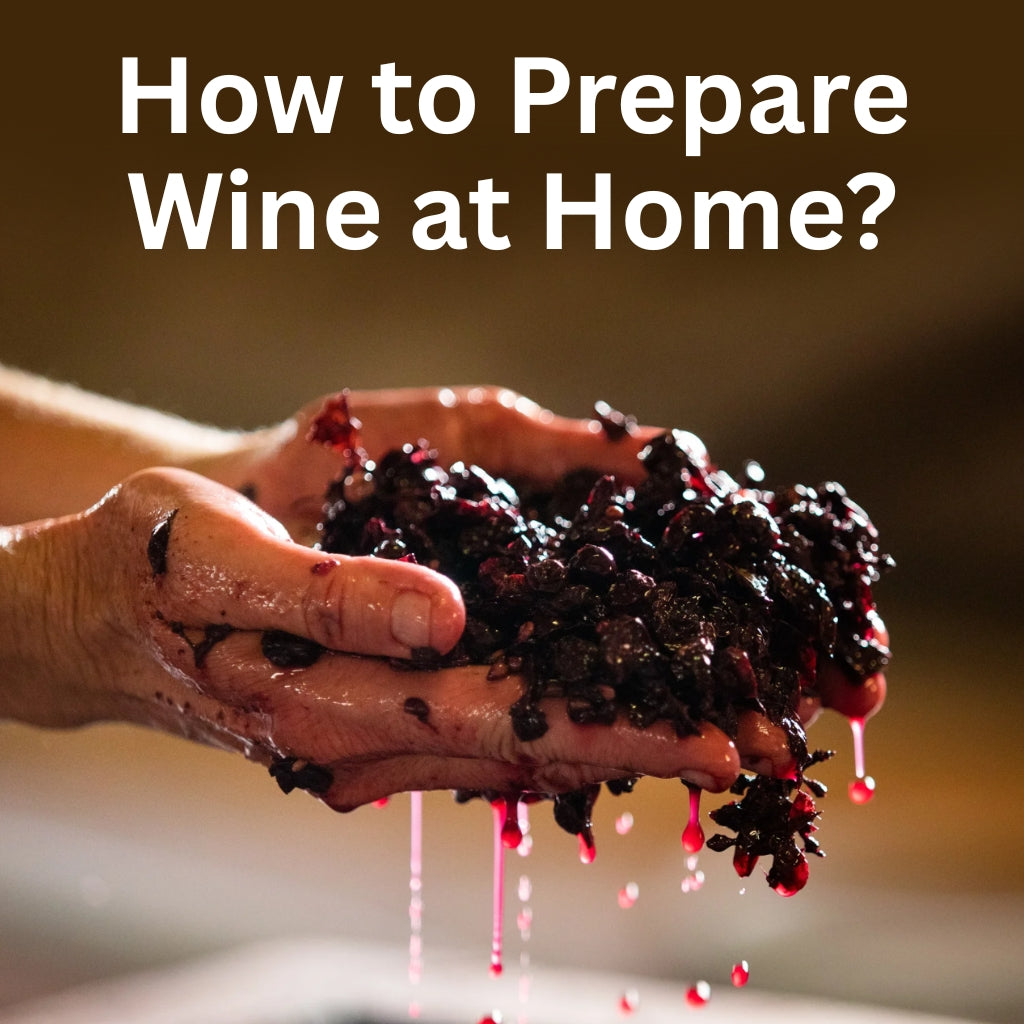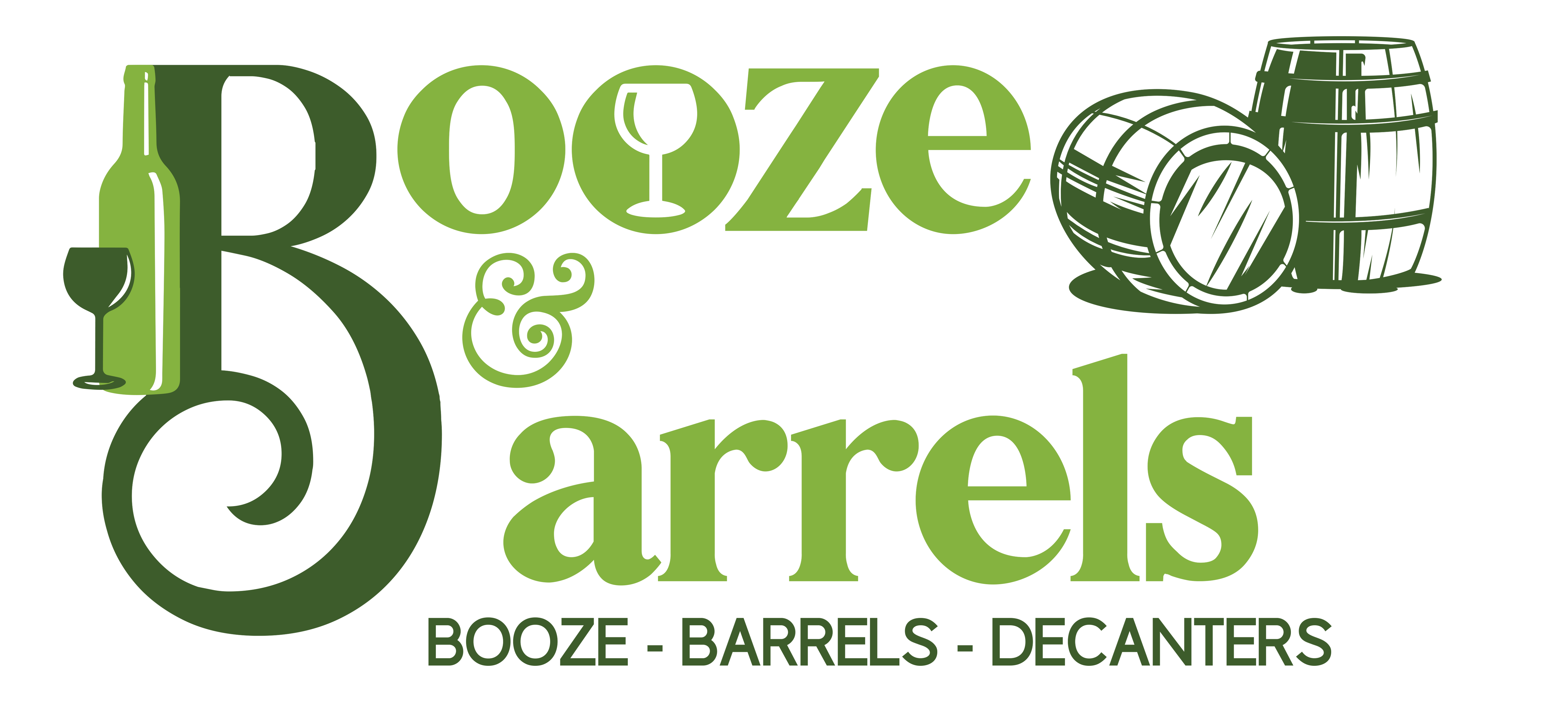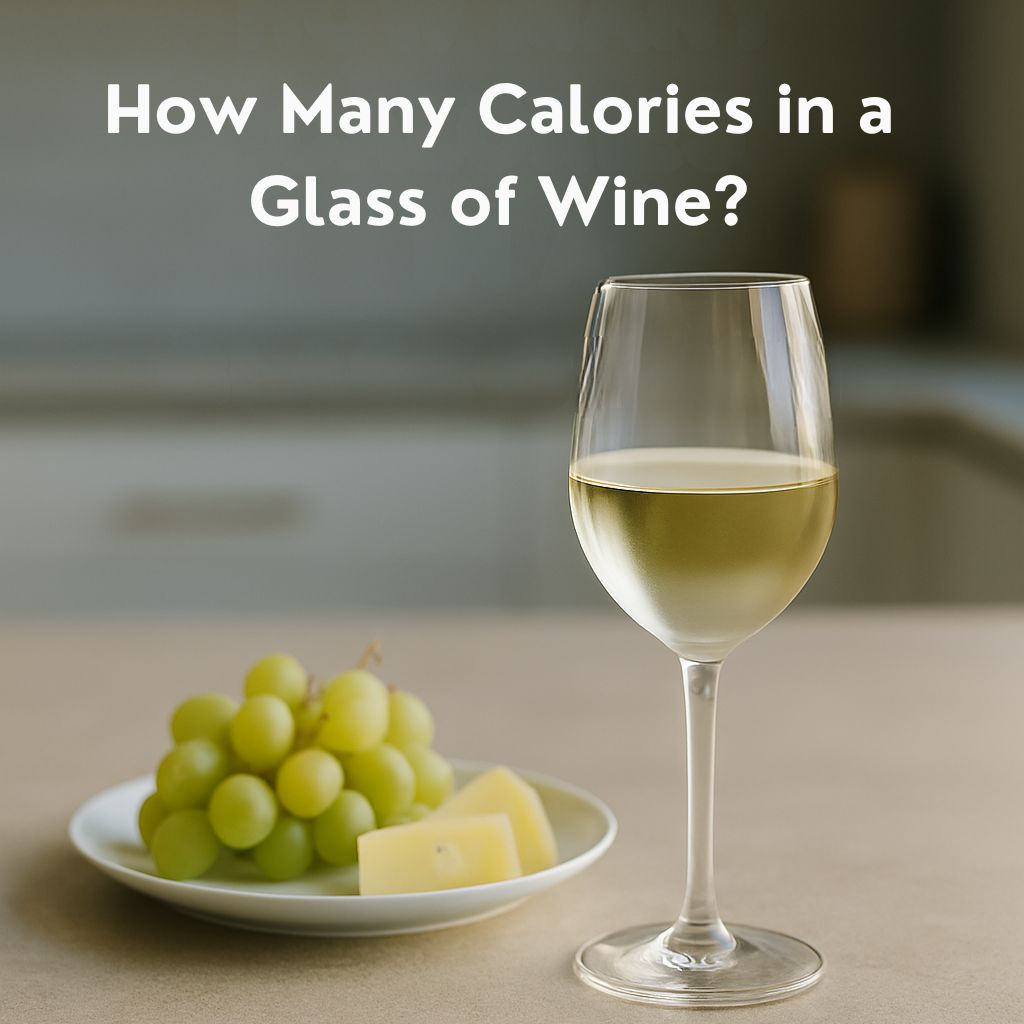
How to Prepare Wine at Home: A Booze & Barrels Guide
Wine is more than just fermented grape juice; it is a living expression of place, time, and craftsmanship. Archaeological evidence suggests that people in the Caucasus were fermenting grapes over 8,000 years ago, and the techniques developed since then laid the foundations for today’s craft. At Booze & Barrels, we honour this heritage while embracing modern tools such as oak mini‑barrels and signature decanters. As Australia’s leading supplier of decanters and oak barrels, our mission is to help enthusiasts turn grapes into gracefully aged wine and serve it with flair.
This article offers a step‑by‑step guide to preparing wine at home, built on research from top winemaking guides and our own experience aging spirits in Oak barrels. We’ll explain the science behind each step and point you to the equipment and wine accessories you’ll need. Whether you dream of a crisp white or a robust Shiraz, this guide will help you craft wine with confidence.
Understanding the Basics
Grape quality matters
The foundation of wine is high‑quality fruit. Grapes contain the sugar, acid, and tannins necessary to produce a balanced wine. Varietal choice depends on climate: warm regions favour heat‑tolerant grapes like Cabernet Sauvignon and Syrah, while cooler climates suit Pinot Noir or Riesling. Harvest timing is determined by sugar content, measured with a refractometer. Picking fruit at the right sweetness ensures enough sugar for yeast to convert into alcohol, producing stable, flavourful wine.
Red vs white wine
The winemaking steps are similar for red and white wines, but differ in the treatment of grape skins. For white wine, the juice is pressed off the skins immediately after crushing, which prevents excessive tannin extraction and results in a lighter style. Red wine ferments “on the skins” for days or weeks, extracting colour and tannins. This contact gives red wines structure and ageing potential.
The science of fermentation
At the heart of winemaking is fermentation - the conversion of sugar to alcohol by yeast. Primary (alcoholic) fermentation occurs when yeast cells consume sugars and release alcohol and carbon dioxide. Winemakers typically maintain 22–25 °C for reds and 15–18 °C for whites, as temperature affects yeast activity. Roughly 16-19 grams of sugar per litre yields 1 % alcohol. Once sugar levels drop and alcohol rises, yeast becomes dormant and fermentation slows. In secondary fermentation, the wine clarifies, and malic acid may convert to softer lactic acid. Later, the wine stabilises and ages in a barrel or a bottle.
Equipment and ingredients
Having the right kit makes winemaking smoother and safer. Essential supplies include:
- Fermentation vessel: A glass carboy, stainless‑steel tank or food‑safe bucket to hold the must (crushed grapes or juice). For small batches, our miniature American oak barrels double as fermenters and ageing vessels.
- Airlock and bung: A one‑way valve that lets carbon dioxide escape while preventing oxygen and contaminants from entering. Without an airlock, the must may oxidise or turn into vinegar.
- Hydrometer or refractometer: Measures sugar concentration (specific gravity or Brix) so you know when to adjust or harvest.
- Siphon hose: Allows wine to be transferred (racked) without disturbing sediment.
- Sanitiser: Keeping equipment sterile prevents spoilage. Bleach is discouraged; specialist cleaners or Campden tablets work better.
- Yeast and yeast nutrients: Cultured wine yeast provides predictable fermentation and flavour. Nutrient feeds yeast during fermentation, especially for non‑grape wines that lack sufficient nitrogen.
- Sugar: Needed when fruit lacks adequate sweetness; dissolving sugar before fermentation helps achieve desired alcohol levels.
- Acid blend, tannin powder, and pectic enzyme (optional): Used to balance non‑grape wines.
- Corks and bottles: Use new corks and clean bottles to ensure a tight seal and avoid contamination.
At Booze & Barrels, you can find bartender kit essentials and wine accessories gift sets, including a wine decanter, hydrometer, and corkscrew, in our “wine accessories sets” section.
Step-by-Step Guide to Making Wine
1 Harvest and choose your fruit
Wine quality begins in the vineyard. Grapes should be harvested when they taste ripe and have the correct sugar balance. A refractometer helps determine the Brix level; most table wines are harvested at 20-24 Brix (about 11-14 % potential alcohol). In small‑scale home winemaking, trust your palate; ripe grapes taste sweet with balanced acidity. At Booze & Barrels, we suggest choosing varieties suited to your climate (e.g., Shiraz for warm regions or Cabernet Sauvignon for cooler zones).
If you’re experimenting with fruit wines (berries, apples, or even flowers), preparing the fruit involves washing, de‑stalking, and sometimes freezing or mashing to break cell walls. Always use ripe, unblemished fruit for the best flavour.
2 Destem and crush
Once your fruit is picked, separate it from the stems to avoid excess bitterness. Destemming reduces tannin development. Crush the grapes gently to release juice. Traditionally, crushing involved stomping grapes with feet; modern home winemakers use sanitized presses. For white wine, move crushed grapes and stems into a press immediately so juice flows without skin contact. For red wine, leave the skins and seeds in the must to extract colour and tannins. Lightly aromatic reds such as Syrah may be left uncrushed to preserve fruit aroma.
3 Press the must
Pressing separates juice from solids. Free‑run juice (the liquid that drains naturally) is considered higher quality than pressed juice, which is more tannic. When making white wine, press before fermentation to minimise skin contact; for reds, press after several days to weeks of fermentation. A small hand‑crank press is usually sufficient for home batches, though our miniature American oak barrels can hold juice after pressing for aging.
4 Test and adjust
After crushing or pressing, test the must. Use a hydrometer to measure specific gravity (sugar content) and adjust with sugar or water if necessary. Most home kits include both Brix and specific gravity scales. Test acidity with simple titration kits; total acidity (TA) influences tartness and stability. If acidity or sugar is low, add acid blend or sugar to reach the desired balance. Many winemakers also add sulfite (often as Campden tablets) to suppress wild yeast and bacteria. This pre‑treatment allows you to inoculate with a chosen wine yeast strain, giving a cleaner fermentation.
5 Primary fermentation
Pitch your cultured yeast into the must. For grape wines, fermentation often starts on its own, but cultured yeast provides consistent results. Keep the fermentation vessel in a warm (for reds) or cool (for whites) place. During the first week, yeast converts sugars to alcohol; the mixture foams and releases carbon dioxide. Daily stirring or “punching down” keeps grape skins submerged and prevents spoilage. Primary fermentation usually finishes when specific gravity drops to around 1.010. If necessary, add sugar (chaptalisation) to reach your desired alcohol level.
6 Secondary fermentation and racking
After the vigorous primary phase, siphon the wine into a clean fermenter, leaving behind sediment (lees). This process, called racking, clarifies the wine and reduces off‑flavours. Fit the vessel with an airlock and allow secondary fermentation to continue at a controlled temperature for 4-6 weeks. You may rack the wine again if excessive sediment forms. Secondary fermentation can include malolactic fermentation, where tart malic acid converts to softer lactic acid, producing a smoother mouthfeel.
Clarification may involve fining agents like bentonite, egg whites, or Sparkolloid. These bind tiny particles, helping them settle out. Filtration is optional for home batches but yields a brighter wine. Avoid splashing, particularly with white wines, to prevent oxidation.
7 Ageing and maturation
Ageing transforms young wine into a complex beverage. You can age wine in a glass, stainless steel, or oak. Oak imparts vanillin, spice, and toast flavours while allowing slow oxygen ingress that softens tannins. At Booze & Barrels, we craft American white oak barrels (1.5 L up to 25 L) charred to a medium toast. Small barrels age wine faster because a greater surface area contacts the liquid, yielding mature flavours in just 4-6 weeks. For long‑term ageing, larger barrels develop more subtle complexity over months or years.
Before ageing, cure new barrels by filling them with hot water to swell the staves and seal leaks. For maintenance, keep the barrel filled with water when not in use and occasionally apply beeswax to seal leaks. Store barrels in a cool, damp place away from sunlight. With proper care, an oak barrel can last 8-10 years.
If you prefer not to age the wine in wood, you can age the wine in glass and use oak chips or cubes to add complexity. Alternatively, a personalised oak barrel makes a striking centrepiece and conversation starter while delivering genuine ageing benefits.
8 Tasting, adjusting, and bottling
After secondary fermentation, taste your wine. If it lacks sweetness, add a sugar and sorbate solution (wine conditioner). Sorbate prevents yeast from re‑fermenting residual sugar. Allow the wine to settle and clear again. When you’re satisfied with flavour and clarity, sanitise bottles, siphon the wine gently to avoid disturbing sediment, and cork securely. Label each bottle with the grape or fruit type and date. Store bottles on their sides in a cool, dark place. Red wines benefit from extended bottle ageing, while whites and rosés are often enjoyed sooner.
9 Serving with style
Preparation doesn’t stop once wine is bottled; serving matters too. Decanting exposes wine to oxygen, enhancing aromas and softening tannins. A crystal whiskey decanter or wine decanter from our collection maintains temperature and provides a dramatic presentation. Choose a decanter style that fits your personality: a globe decanter depicts an etched world map, a high heel decanter adds playful charm, while a Skull Decanter makes a bold statement. Pair your decanter with stainless steel wine glasses or an elegant Whiskey Decanter and glasses set for a cohesive look. For cocktail lovers, our bartender kit and whisky stones gift sets keep drinks chilled without dilution.
Tips and Troubleshooting
Making wine is both science and art. Even experienced winemakers encounter challenges. Here are some practical tips:
-
Keep meticulous notes: Record harvest dates, sugar readings, temperature, and any adjustments. Notes help replicate successes and diagnose issues.
-
Sanitise everything: Contamination is the enemy of good wine. Clean your hands, equipment, and work area before each step.
-
Patience pays off: Fermentation may seem sluggish; don’t panic if bubbles slow. Allow time for the yeast to finish its work. Similarly, don’t bottle too early or the corks may pop.
-
Monitor temperature: Excessive heat can kill yeast, while cold stalls fermentation. Aim for the recommended ranges.
-
Use quality fruit and water: Good wine cannot be made from bad fruit. Avoid juices with preservatives like potassium sorbate, which inhibit yeast.
-
Adjust taste thoughtfully: If the wine tastes too tart, allow time or add a tiny bit of sugar. If it seems flat, an acid blend may brighten flavours. Remember that wine evolves in the bottle.
- Store barrels properly: Keep barrels hydrated and filled with water or wine when not in use. Re‑cure and wax to seal leaks.
The Booze & Barrels Difference
At Booze & Barrels, we bring winemaking and presentation together. Our personalised decanter and personalised oak barrel services let you engrave names or messages, creating memorable gifts. Our Wooden Decanters Box neatly stores decanters and glasses perfect for gifting or keeping your home bar organised. Miniature port barrels or wine barrels offer fast ageing and rustic charm for Australian homes.
Beyond products, we share expertise. See our blog post on maintaining American oak barrels for guidance on curing and caring for your cask. For accessories, our guide to must‑have wine tools explains why decanters, corkscrews, and chillers improve the drinking experience. By linking to our own articles, we ensure readers have deeper context and support.
Conclusion
Preparing wine at home is a rewarding journey that combines tradition, science, and personal taste. From selecting ripe grapes and crystal whiskey decanter sets to mastering fermentation and ageing in American oak barrels, each step shapes the final flavour. The key is understanding why each stage matters: harvesting at the right sweetness ensures fermentation success; destemming and pressing control tannins; hydrometer readings inform sugar adjustments; and patient ageing in oak adds complexity.
As a proudly Australian‑owned company, Booze & Barrels invites you to explore this craft with us. Whether you’re starting with a whisky decanter set, experimenting with a globe decanter, or ageing your first batch in a personalised oak barrel, we’re here to provide quality tools, guidance, and inspiration. With the right equipment, a clean workspace, and a little patience, you can transform grapes into a bottle of wine that reflects your own style, served beautifully in a decanter that tells your story. Cheers to your winemaking adventure!


